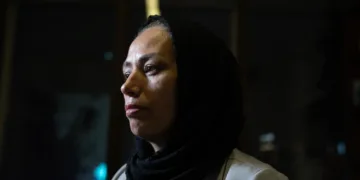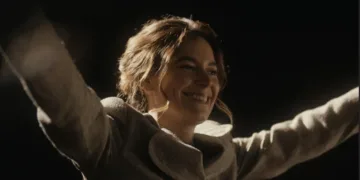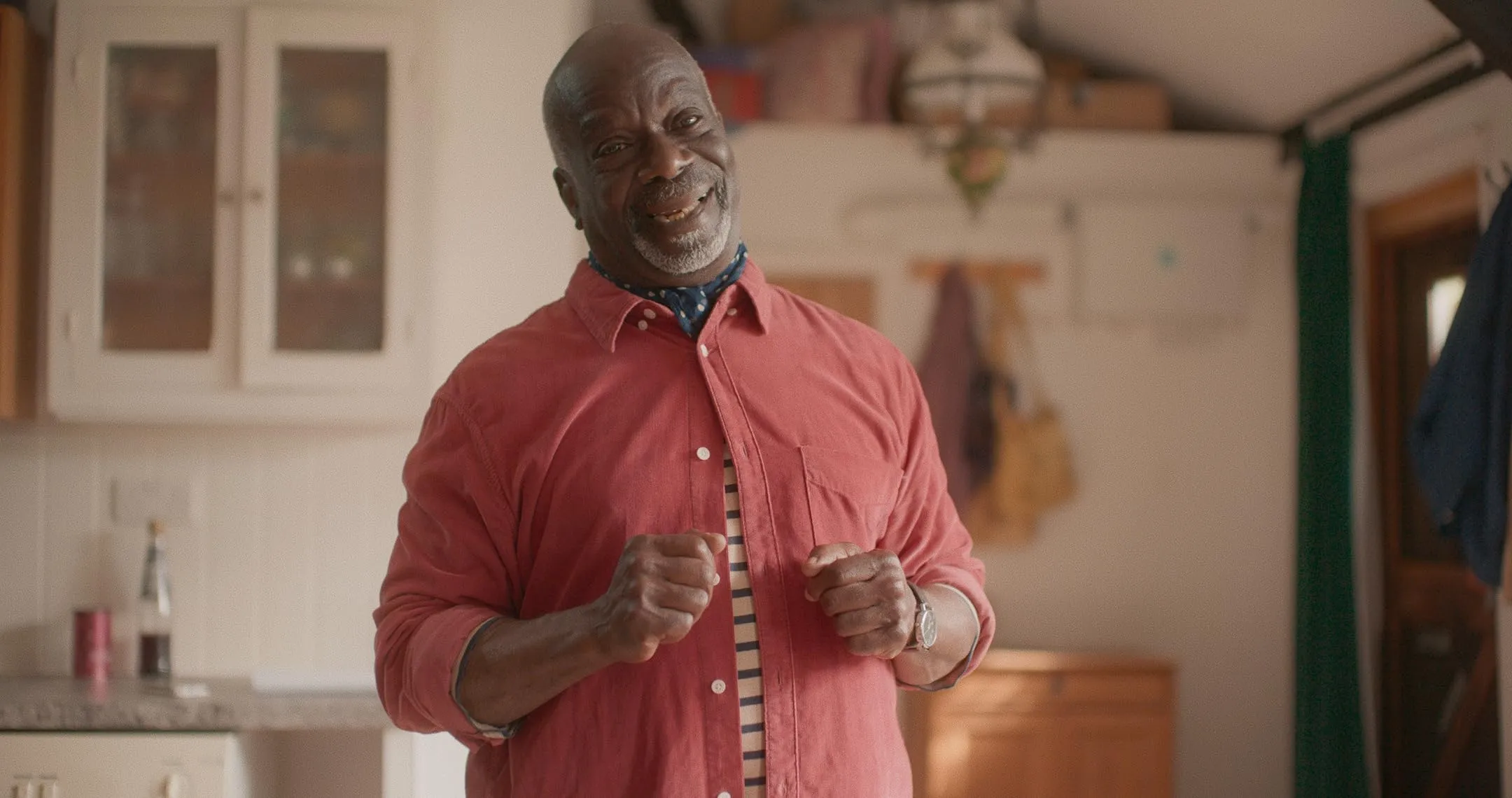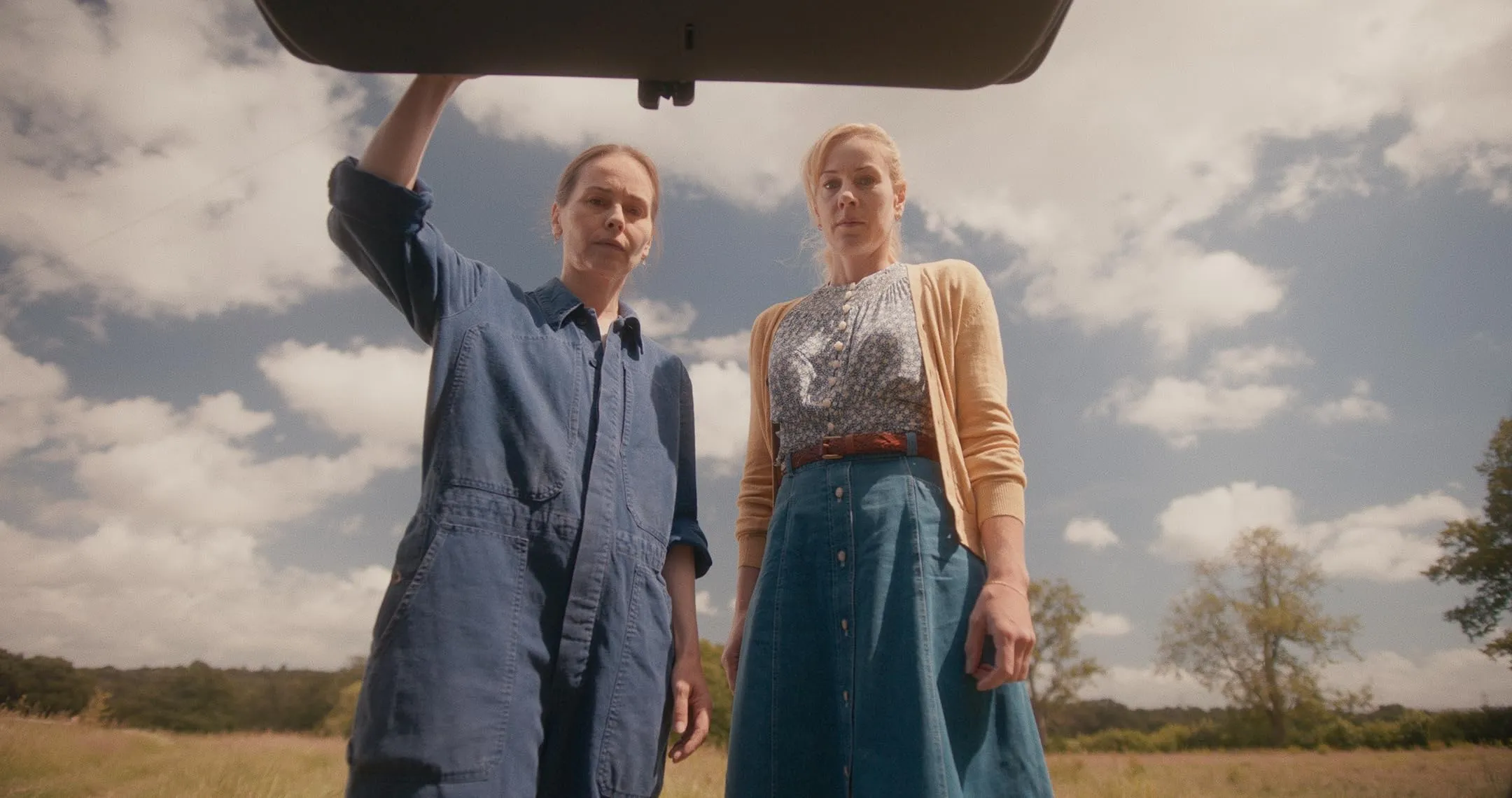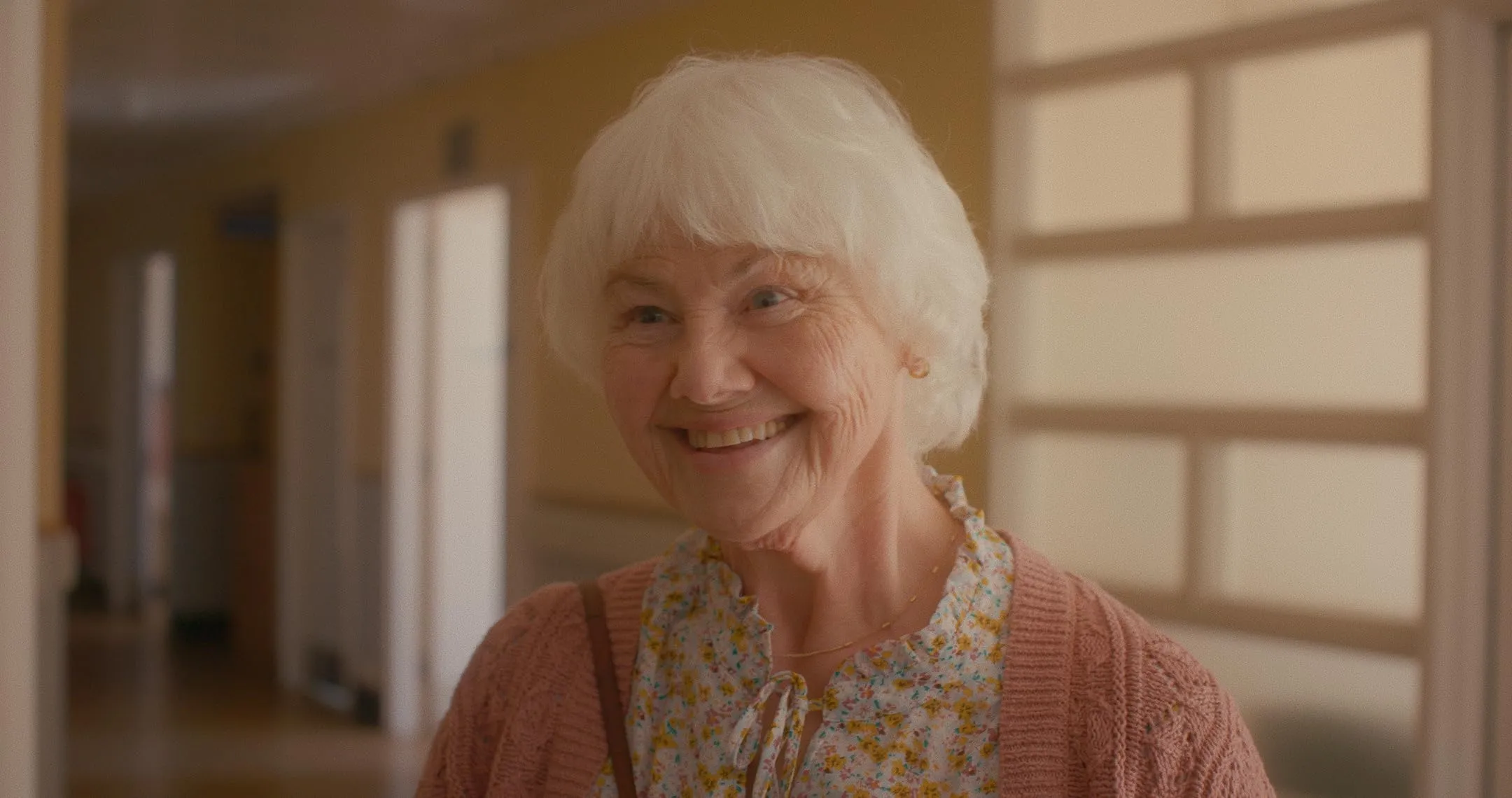Portraits of Dangerous Women transports viewers to a strange narrative realm that questions established storytelling conventions. The film, directed by Swiss filmmaker Pascal Bergamin, revolves around an unpleasant road event involving a dog that brings together three women: an unhappy teacher, a strange caretaker, and a troubled artist. This arrangement feels fanciful and perplexing, reminiscent of Jean-Luc Godard’s humorous narrative technique.
Bergamin balances between hilarity and poignant moments, reflecting contemporary cultural fears about connection and authenticity. The cinematography captures the grandeur of rural Britain, while the editing incorporates jarring shifts that mirror the characters’ shattered lives. This unique design highlights the themes of disconnection and unexpected friendship in the film.
Finally, Portraits of Dangerous Women bridges the gap between indie and mainstream cinema, providing a new viewpoint on how we relate to one another in an unpredictable world. It is a reminder of the film’s ability to mirror societal complexities, similar to the tales seen in French New Wave filmmaking.
The Collision of Lives: A Plot Summary
Portraits of Dangerous Women begins with a shocking incident: a dog is hit by two cars quickly, first by Steph (Jeany Spark) and then by Tina (Tara Fitzgerald). This violent scene serves as the film’s inciting occurrence, triggering a chain of events that pulls together a motley cast of characters in a rural British location.
Steph, a disillusioned primary school teacher, is bickering with her father, Jon (Mark Lewis Jones), an art gallery owner, when the tragedy happens. This collision disturbs their humdrum commute and sets off a chain of interactions that will change their lives forever.
The accident introduces Ashley (Yasmin Monet Prince), a troubled youngster who claims ownership of the dog, plunging the group into a web of emotional turmoil and confrontation. Tina’s enigmatic past—having spent time for money laundering—provides layers of intrigue to the narrative, while her wild card demeanor adds unpredictable energy. Each character represents a specific societal anxiety: Steph’s dissatisfaction with her life, Jon’s fight to retain familial ties, and Tina’s struggle with her past decisions.
The film experiments with character dynamics as the plot develops, showcasing how these women gradually forge unexpected connections during their common suffering. Their interactions range from awkward confrontations to unexpected vulnerability, reflecting the film’s examination of friendship built out of discomfort.
Key events, such as a drunken meeting alongside a food truck and Tina’s jubilant divorce party, develop these relationships while providing moments of levity to punctuate the film’s general tone. Portraits of Dangerous Women’s blend of humor and pathos creates a narrative that connects with modern themes of connection and personal redemption, placing it as a reflection of our times.
Unraveling the Characters: A Deeper Look
The characters in Portraits of Dangerous Women serve as mirrors, reflecting the complexities of modern life while navigating their own struggles against the backdrop of an unforeseen catastrophe.
The narrative is centered on Steph, played by Jeany Spark, embodying the disillusionment many people feel today. Her character arc, as a primary school teacher dealing with an unhappy marriage and a sense of stagnation, is both moving and relatable.
Her tumultuous relationship with her father, Jon, suggests a deeper level of emotional turmoil—while he supports her, their bickering reflects unresolved tensions and unstated expectations. This dynamic illustrates the generational disparities that frequently exist in parent-child relationships and not only hampers their interactions.
Mark Lewis Jones gives a nuanced performance as Jon, the well-intentioned father and art dealer. His role is critical as he attempts to bridge the gap between his daughter’s dissatisfaction and his goals. Jon’s interactions with the other characters, particularly Tina and Ashley, reflect his struggle to retain familial bonds while making new connections. His kindness contrasts with the plot’s more chaotic components, giving the narrative a sense of stability amid turmoil.
Tara Fitzgerald’s portrayal of Tina adds a captivating dimension to the story with her “dangerous” past. Her character, who previously served time for money laundering, lends complexity and intrigue to the film’s study of redemption and second chances. Tina’s interactions with Steph are remarkable; she is both a cautionary tale and a potential ally. Their interactions alternate between tenseness and camaraderie, demonstrating how shared trauma can lead to unexpected alliances.
Finally, Ashley, played by Yasmin Monet Prince, is the film’s wild card. Her oddities, such as claiming ownership of the dog and engaging in impetuous actions, account for much of the plot’s unpredictable nature. However, her personal growth journey strikes a deep chord. Ashley emerges as a figure of teenage rebellion and the search for identity as she navigates her tumultuous feelings and the consequences of her actions. Her character personifies the film’s larger themes of connection and transformation, reminding us that progress is possible even amid chaos.
In addition to propelling the narrative forward, the interplay between these characters reflects bigger cultural themes such as generational conflict, personal struggles, and the search for understanding in an increasingly isolated world. Each character, with their past and motivations, enables audiences to engage with the film deeper, delving into the complexities of human relationships in the face of adversity.
The Threads of Connection: Themes and Motifs
In Portraits of Dangerous Women, the themes of friendship and connection are expertly explored, and the narrative illustrates how shared pain may forge surprising bonds. The film’s instigating act, a car accident involving a dog, causes these relationships to bloom.
As the characters deal with the emotional consequences, they realize their struggles are similar. This camaraderie becomes a source of strength, allowing individuals to face their obstacles. The film eloquently depicts how these connections, born out of chaos, may lead to significant inner transformation.
In a broader cultural backdrop, the film shows a generational movement toward acknowledging the importance of mental health and emotional support. It emphasizes how vulnerability can lead to resilience. The interactions between Steph, Jon, Tina, and Ashley demonstrate how delicate yet powerful human connections can be, echoing themes in current indie cinema, where character-driven narratives frequently emphasize emotional depth.
Another moving theme in the film is the effect of accidents on people’s life paths. The initial chaos of the catastrophe sends each character on a journey of self-discovery and growth. It highlights how tragedy alters our lives, frequently causing us to reconsider our objectives and relationships. The narrative illustrates that, while the scars of such events may persist, they also provide an opportunity to rebuild and reshape identity. This subject resonates with audiences, reminding us that from adversity can emerge fresh beginnings, which feels especially pertinent in today’s fast-paced, often unpredictable world.
The Dance of Tone and Style
Portraits of Dangerous Women expertly combines humor and weirdness, using comedy as a mirror to examine deeper, more serious themes. The film’s comic components are effortlessly integrated into the narrative, often resulting from the absurdity of the characters’ situations.
For example, the awkward discussions after the dog tragedy provide moments of levity to temper the emotional weight of the characters’ struggles. This interplay of humor and pathos is reminiscent of filmmakers such as Noah Baumbach, who expertly navigates similar areas, allowing audiences to chuckle amidst life’s chaos.
The film’s tone is further enhanced by its lighthearted moments, which serve not just as humorous relief but also as a way of emphasizing the resilience of human connections. These differences encourage viewers to engage with the story on various levels, reflecting the complexities of friendship and trauma in a relatable way. The humor feels natural, coming from the characters rather than being forced, which enhances its impact.
Portraits of Dangerous Women adopts a style that complements its narrative eccentricities. The editing choices are particularly remarkable; they frequently include sudden cuts and playful transitions that mirror the characters’ emotional states and the film’s chaotic tempo. This unorthodox strategy creates a sense of pace, enticing viewers to continue to engage even when the plot meanders.
The photography evokes the charm of rural Britain, with sun-drenched vistas that starkly contrast the characters’ inner turmoil. The visual style, which features soft lighting and intimate framing, creates a welcoming ambiance while allowing the audience to feel the weight of the characters’ experiences. Bergamin’s ability to blend artistic flair with narrative depth results in a solid and fanciful film. This cinematic method enhances the storytelling and places the film in the current world of independent cinema, where creativity and emotional resonance are essential.
A Tapestry of Performances
Portraits of Dangerous Women’s performances drive the film’s emotional impact, providing a complex tapestry that enhances the storytelling. Each actor adds a unique flavor to their character, allowing viewers to empathize emotionally with their struggles and victories.
Jeany Spark’s performance as Steph is riveting, with her subtle expressions portraying a lifetime of anguish and yearning. For example, her confrontation with Jon after the accident is loaded with raw emotion, making the spectator feel the weight of her disillusionment.
Mark Lewis Jones’ performance as Jon is grounded, with his kindness and vulnerability showing through. His interactions with Steph and Tina emphasize the complexities of familial love, particularly in a moment in which he attempts to bridge the gap between his daughter and her estranged pals. This scene exemplifies the film’s investigation of connection in the face of chaos.
Tara Fitzgerald’s Tina is a revelation, embodying both strength and vulnerability. Her character’s past provides dimension, particularly in poignant discussions about her yearning for redemption. Ashley, played by Yasmin Monet Prince, injects young vitality and unpredictability into the story. Her idiosyncrasies push important plot lines and provide moments of levity to temper the more serious tone.
Together, this ensemble produces a vibrant dynamic that portrays the complexities of human relationships, making their travels feel genuine and relatable. Each performance deepens the character arcs and reflects bigger societal themes, which tremendously impact audiences.
Cultural Context and Commentary
Portraits of Dangerous Women profoundly reflect women’s responsibilities in modern society, showcasing the complexities of their relationships and the social pressures they face. The film features a wide cast of female characters, each dealing with their struggles, who collectively represent a broader statement on the demands placed on women today.
Steph’s dissatisfaction with her life, Tina’s struggle with her past, and Ashley’s search for identity all illustrate the complexities of womanhood, demonstrating how friendship can emerge as a key source of support in the face of adversity.
The narrative deftly ties together societal themes such as disconnection, mental health, and the search for authenticity. The film questions traditional ideals of femininity and suggests that vulnerability can lead to empowerment as the characters address their pasts and forge new connections.
This connects well with current cultural discussions about women’s agency and the importance of community, making the film more than just a story about women but also reflects the changing terrain of female relationships in the twenty-first century.
Finally, the film’s message emphasizes the importance of connection in our increasingly divided lives. It suggests that, while life can be chaotic and full of obstacles, the bonds we make can provide solace and bonds, offering hope and resilience in the face of uncertainty. Portraits of Dangerous Women’s thematic richness makes it an important contribution to the current conversation about women’s experiences.
The Review
Portraits of Dangerous Women
Portraits of Dangerous Women is a moving examination of the complexities of female relationships, punctuated by an unexpected loss. The film, which features exceptional performances and a blend of humor and pathos, explores themes of connection and personal growth against societal expectations. Its unique narrative and strong character interactions ring true, making it an important critique of contemporary womanhood. This film is a profound reflection and an intriguing story that will stay with you long after the credits roll.
PROS
- Strong, nuanced performances from the cast.
- Engaging blend of humor and serious themes.
- Innovative narrative structure that explores complex relationships.
- Relevant commentary on contemporary women's roles.
- Beautiful cinematography that enhances the storytelling.
CONS
- Some plot points may feel predictable.
- Pacing can be uneven at times.
- Certain character arcs could benefit from deeper exploration.


























